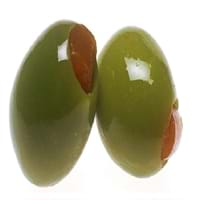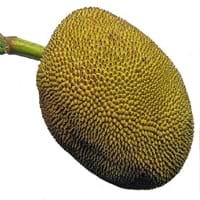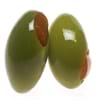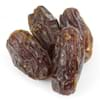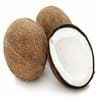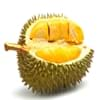Health Benefits
Cancer prevention, Helps in cartilage regeneration, Prevents macular degeneration, Treatment of alzheimer's disease
Cancer prevention, Heart care, Prevents constipation, Regulation of heart rate, Treatment of colonic diseases
General Benefits
Anti oxidant properties, Anti-inflammatory properties, Boosts immune system, Controls blood pressure, Digestive aid, Maintains healthy cholesterol level
Controls blood pressure, Cures cough, Digestive aid, Flu treatment, Improves eye vision, Treatment of common cold
Skin Benefits
Hydrates skin, Skin rejuvenation, Treatment of skin diseases
Brightens and lightens complexion, Reduces wrinkles
Hair Benefits
Acts as moisturizer, Good conditioner, Regulates hair growth
Promotes longer and healthier hair, Regulates hair growth
Allergy Symptoms
NA
Abdominal cramps, Diarrhea, Skin Rashes, Swelling of mouth, tongue or lips, Vomiting
Side Effects
Affects blood glucose levels, Dizziness, Stomach pain
Allergic reaction, Coagulation
Pregnant Women
Yes
Not Available
Best Time to Eat
Hardly eaten raw, Olive oil is consumed for many purposes.
Along with meal, As a snack in the late afternoon, Don't consume at night and before bed, Eat the fresh ones, avoid mixing with any other foods, don't eat after meal., Morning time (before lunch)
Vitamin B5 (Pantothenic Acid)
Vitamin C (Ascorbic Acid)
Vitamin K (Phyllochinone)
Not Available
Calories in Fresh Fruit with Peel
Not Available
Calories in Fresh Fruit without Peel
Not Available
Calories in Frozen Form
Not Available
Type
Tree fruit
Tree fruit, Tropical
Season
Spring, Summer
Autumn, Monsoon, Summer
Varieties
Manzanillo, Sevillano, Mission, Ascolano, Barouni, Gordal, Rubra and Picholine
Black Gold, Cheena, Cochin, Dang Rasimi, Golden Nugget and Golden Pillow
Color
Black, Green, Purple, Yellow
Dark green, Golden yellow, Green, Indigo, Magenta, Yellowish-orange
Inside Color
Brown
Yellow
Origin
Eastern Mediterranean Region
India
Soil Type
Well-drained
Clay loam, Porous, Sandy, Well-drained
Climatic Conditions
Warm to hot climate
Humid, Warm
Facts about
- In ancient Greece, 1st eye shadow was made by adding olive oil in ground charcoal.
- The most expensive form of olive oil is Extra Virgin.
- Largest type of olive tree is known as donkey tree & smallest one is called bullet.
- There are up to 500 seeds in Jackfruit & these seeds are edible.
- Root extracts of Jackfruit tree is used to treat diarrhea, fever and asthma.
- The taste of jackfruit is combination of mango, banana, melon and papaya.
Other Countries
Algeria, Egypt, Greece, Italy, Morocco, Portugal, Syria, Tunisia, Turkey
Bangladesh, Indonesia, Nepal, Thailand
Top Importer
United States of America
United States of America
Botanical Name
Olea europaea
Artocarpus heterophyllus
Synonym
Not Available
Artocarpus heterophylla or Artocarpus integra or Artocarpus integrifolia
Subkingdom
Tracheobionta
Tracheobionta
Division
Magnoliophyta
Magnoliophyta
Class
Magnoliopsida
Magnoliopsida
Subclass
Rosidae
Alismidae
Species
O. europaea
A. heterophyllus
Generic Group
Olive
Not Available
Difference Between Olive and Jackfruit
We might think that Olive and Jackfruit are similar with respect to nutritional value and health benefits. But the nutrient content of both fruits is different. Olive and Jackfruit Facts such as their taste, shape, color, and size are also distinct. The difference between Olive and Jackfruit is explained here.
The amount of calories in 100 gm of fresh Olive and Jackfruit with peel is 115.00 kcal and Not Available and the amount of calories without peel is Not Available and 95.00 kcal respectively. Thus, Olive and Jackfruit belong to and category.These fruits might or might not differ with respect to their scientific classification. The order of Olive and Jackfruit is Lamiales and Rosales respectively. Olive belongs to Oleaceae family and Jackfruit belongs to Moraceae family. Olive belongs to Olea genus of O. europaea species and Jackfruit belongs to Artocarpus genus of A. heterophyllus species. Beings plants, both fruits belong to Plantae Kingdom.
